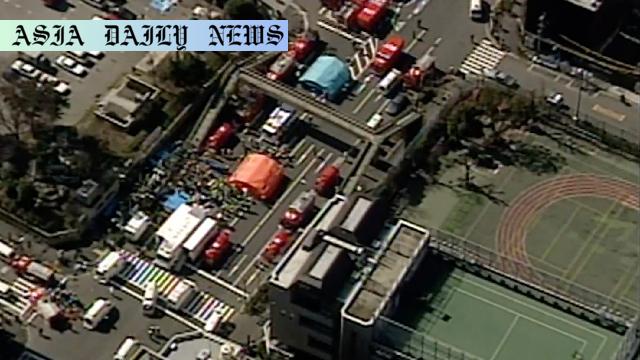Tokyo sarin gas attack digital archive launched, featuring testimonies, photos, and recordings to ensure younger generations remember the tragedy.

Remembering the Tragedy of the 1995 Tokyo Sarin Gas Attack
The digital archive launched by Japan’s Public Security Intelligence Agency serves as a poignant reminder of one of the most devastating terror attacks in Japanese history. The 1995 Tokyo sarin gas attack orchestrated by the Aum Shinrikyo cult left an indelible scar on Japan, claiming the lives of 14 victims and injuring approximately 6,300 individuals. By preserving records of this tragic event, the agency aims to ensure that the story continues to educate and resonate with current and future generations.
A Digital Space for Reflection and Education
The archive, now accessible online, features a rich collection of approximately 100 photos, videos, personal testimonies, and even recordings of emergency police radio transmissions from the day of the attack. These multimedia resources aim to humanize the tragedy, allowing users to connect emotionally with the events of March 20, 1995. For instance, Takahashi Shizue, the widow of an assistant stationmaster who sacrificed his life to help others, shares her story—a reminder of the personal costs of this horrific event. Another haunting story is that of Nagaoka Hiroyuki, who survived an earlier VX nerve agent attack conducted by the same cult. His efforts to support families affected by Aum Shinrikyo highlights the resilience of those impacted.
Preserving History Amid a Waning Memory
With three decades separating today’s youth from the 1995 attack, concerns have arisen regarding the fading collective memory. Many younger Japanese citizens are unaware of the full extent of the sarin gas tragedy and its aftermath. Justice Minister Suzuki Keisuke emphasized at a recent news conference the importance of ensuring such incidents remain part of public memory, not just for historical record but to safeguard against similar threats in the future.
A Continuing Vigilance
Despite the terror group Aum Shinrikyo being dismantled, its successor organizations still reportedly pose a risk. Justice Minister Suzuki warned that these successor groups continue to operate under various disguises, enticing vulnerable young people into their ranks. Efforts to monitor and dismantle such organizations are ongoing, yet this development underscores the importance of public awareness through resources like the digital archive.
Empathy Through Testimonials
The launch of this archive honors the call from surviving friends, families, and victims to ensure the lived experience of their trauma is preserved. The detailed images, recordings, and stories seek to foster empathy, encouraging reflective dialogue within society. By shining a spotlight on the humanity of those affected, the archive becomes not just a documentary tool, but an emotional bridge between generations.
Conclusion
The release of the digital archive signifies more than a technical initiative. It represents a bridge between the past and present, rooted in remembrance, education, and vigilance. As new generations explore the multimedia records, they will hopefully cultivate an understanding of the frailty of peace and the necessity of guarding against violence born of extremism. Initiatives like this remind us that knowledge and awareness are powerful weapons against history repeating itself.
Commentary
The Power of Remembrance
As societies progress and time inevitably moves forward, the events of the past tend to fade from collective memory, especially among younger generations. The Tokyo sarin gas attack, a dark chapter in Japanese history, is one such tragedy that demands continued remembrance. The newly launched digital archive achieves this in a profound and deeply impactful way, ensuring that the pain and lessons of the past remain a source of reflection and learning for decades to come.
A Needed Reminder for Current Times
At a time when extremist groups persist around the globe, this archive serves as both a memorial and a cautionary tale. It highlights the devastating impact of radical ideologies taken to extremes and the importance of vigilance in protecting societies from such threats in the future. Governments and community organizations must work hand-in-hand to ensure that dangerous ideologies cannot harm others under any guise.
Creating a Dialogue with the Future
Archives such as this offer an invaluable opportunity to generate dialogue, particularly among younger audiences who may not grasp the gravity of past events. When combined with educational initiatives and outreach, such projects can create a foundation of understanding that ensures these tragedies are not forgotten. By preserving the humanity of the victims and survivors, the archive allows individuals to connect emotionally, fostering empathy and a deep respect for overcoming adversity.


